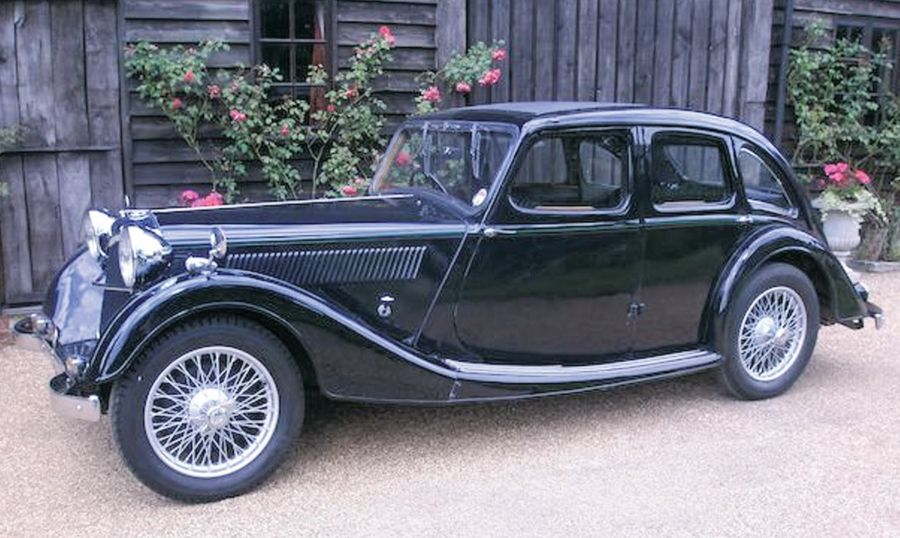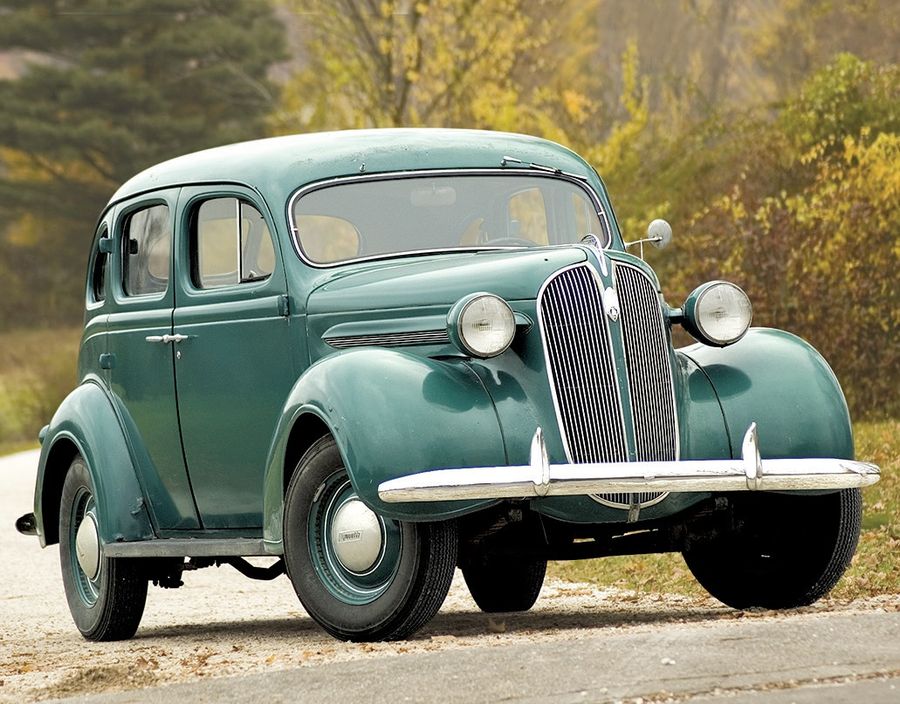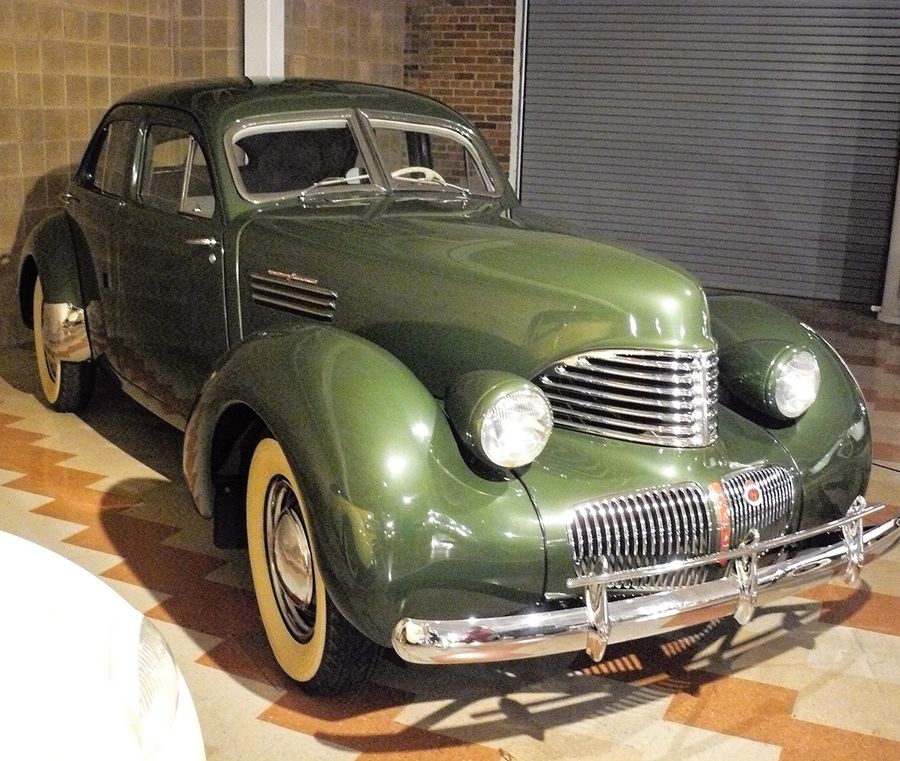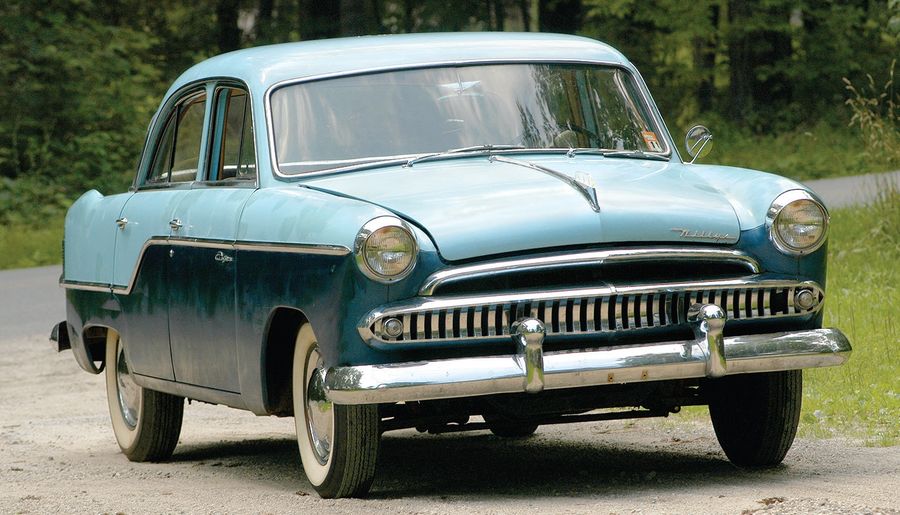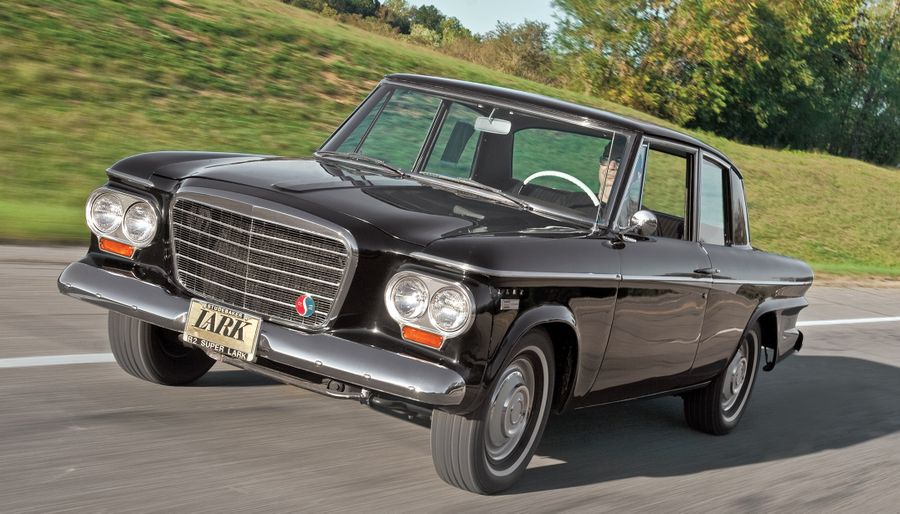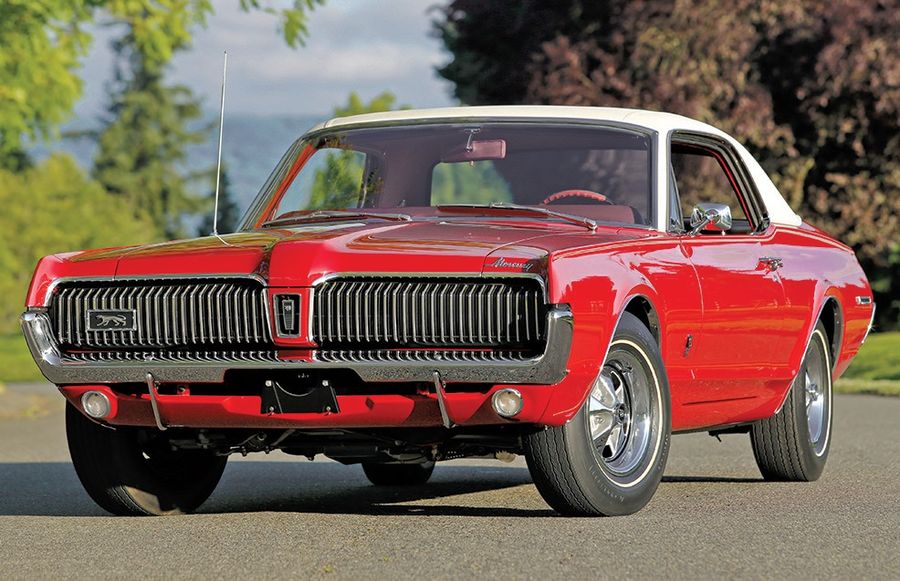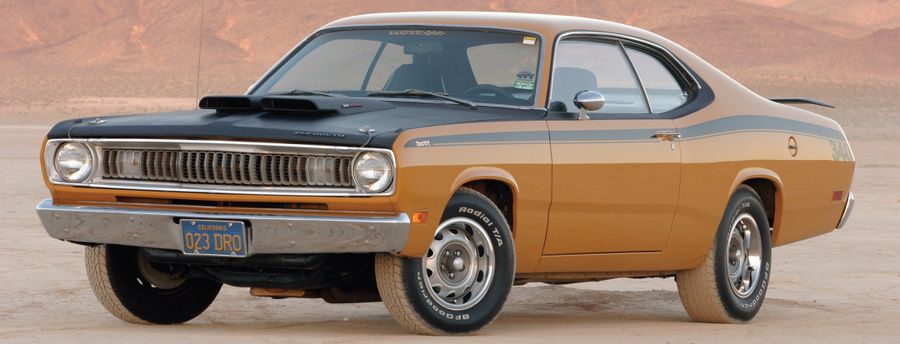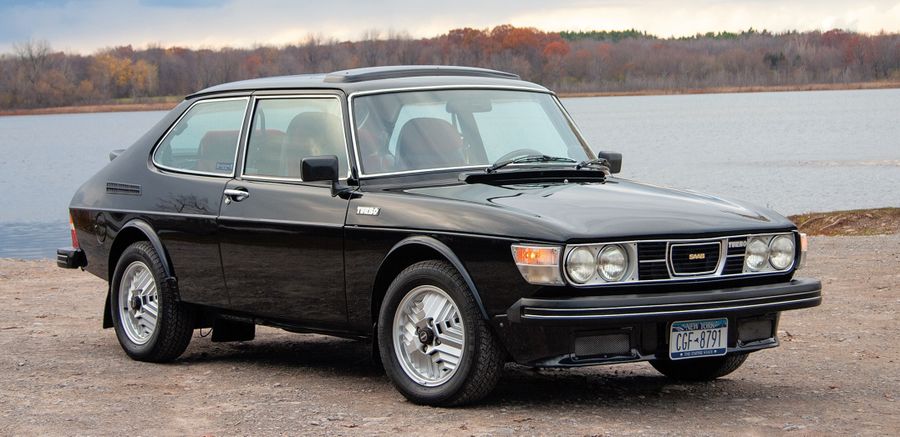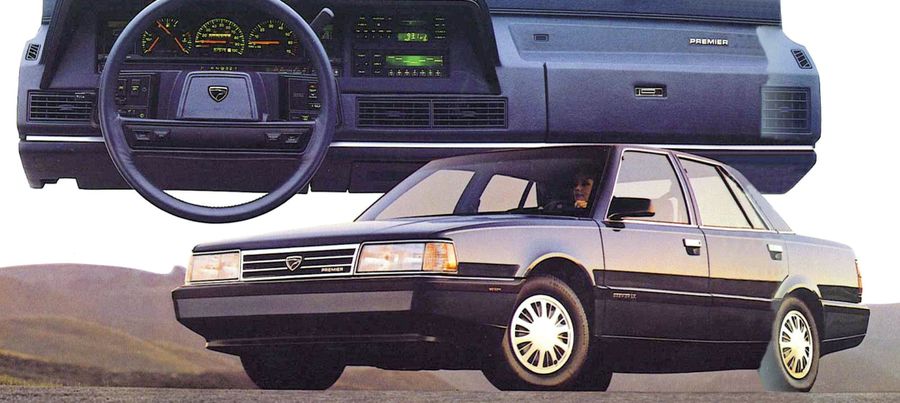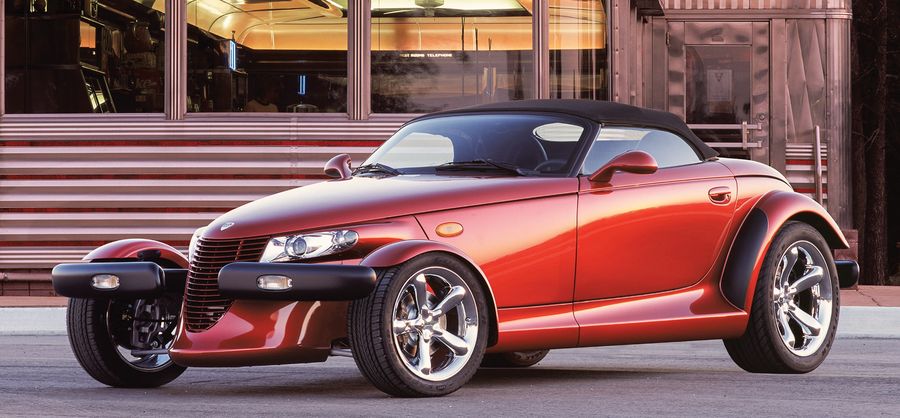For 1970, Plymouth pulled off possibly the most cost-effective restyle in history. With just $15 million budgeted to refresh the Valiant line, the division created an entirely new two-door fastback body—the Duster. Valiant itself was now just a four-door sedan, while the Duster was launched mid-1970 as an ersatz Valiant coupe and A-body Barracuda replacement, with both body styles sharing a new 108-inch-wheelbase. Duster was a sensation, largely responsible for Valiant's 150-percent sales rise for 1970, vaulting Mopar's bargain-basement division to third in the overall sales charts and making Dodge so jealous that it demanded its own.
Because it was a Valiant coupe, it was given Valiant's penchant for thrift—Slant Six engines and the like. But because it was also replacing the A-body Barracuda, it was given hot muscle car variants like the Duster 340, equipped with a 275-horse V-8, four-speed transmission, Rallye wheels, and a paint palette so bright it would make you see spots. For 1974, Valiant became the bestselling single-season Mopar in history, with nearly 477,000 built in that OPEC-strangled year; 277,000 (or 58 percent) of those were Dusters. —Jeff Koch
1970-'78 Triumph Stag

The endearing charm of British motoring, coupled with V-8 muscle and comfortable seating for four, doesn't get any more distinctive than the Triumph Stag. Saddled with a bad reputation centered around overheated engines when new—since resolved after years of research by Stag specialists—you can now reliably enjoy an incomparable form of luxurious Triumph motoring that will set you apart from the more common TR and Spitfire crowd. The Stag's overhead-cam V-8 was designed by Triumph and features aluminum cylinder heads atop a cast-iron block. This V-8 displaced 2,997 cc, was fed by a pair of Stromberg carbs, and its output ranged from 127 to 146 horsepower; it was offered with either a manual four-speed or a Borg-Warner three-speed automatic. Adding to the Stag's uniqueness is an integrated, T-shaped padded roll bar, improving the car's safety and overall stiffness, while a removeable hardtop allows the Stag to be enjoyed during colder weather. During its nine-year production run, approximately 25,000 Stags were produced. —Richard Lentinello
1978 Saab 99 Turbo
Saab was not the first automaker to turbocharge a passenger car, but the way in which its engineers did so with the 99 Turbo established a precedent that virtually every regular-production turbocharged car has followed, since 1978. Building on the sturdy, thoughtfully designed 99, the flagship Turbo—a one-year-only offering in the U.S.—was motivated by a fuel-injected 135-hp, 2.0-liter four-cylinder capable of 0-60 mph in around 9 seconds and a 120-mph top speed. This may sound tame today, but that power being delivered at normal driving speeds was a revelation. When this Swedish hatchback was new, nothing on the road could equal its blend of efficiency, practicality, and punch. Saab built 10,607 99 Turbos, 4,233 of which came to America. This car's follow-up, the intercooled 16-valve 900 Turbo, ultimately made 185 hp. Thanks to this pioneering 99, "turbo" became synonymous with Saab cars, and remained so through the end of the marque in 2011. —Mark J. McCourt
1979 Hurst/Olds

The 1979 Hurst/Olds revived the legendary W-30 option code. At $1,978.20 (for this one, other sources list $2,054.20) the package was not for light wallets, but it was comprehensive. Added at Oldsmobile, not converted by Hurst as in the past, it included the Dual Gate shifter with console, special gold paint scheme, gold painted aluminum sport wheels, sport mirrors, QFV P205/70R14 raised-white-letter tires, power brakes and steering, digital clock, Oldsmobile L34 5.7-liter four-barrel V-8, and the TH350 automatic. The powertrain combination had been emissions certified for full-size Olds models, so EPA guidelines allowed it to also be used in the intermediate Cutlass Calais-based H/O if production was kept under 2,500 units. Thus, 2,499 were built. It had 170-net hp and highway cruiser 2.73:1 rear gears (2.56:1 in California), but the 1978 redesign cut hundreds of pounds and several inches compared to the 1975 H/O's proportions. Offered in black or white, the 1979 H/O closed out the decade in high style. —Thomas A. DeMauro
1980s-present
Faced with ever more stringent fuel economy, emissions, and safety regulations, automakers embraced digital technology in the 1980s. As years passed, they leveraged it in ways that made automobiles more capable, more user friendly, and increasingly more efficient. With computer engine management, fuel injection, and forced induction, smaller engines were able to punch above their weights. All-wheel drive became ubiquitous in this era, as did automatic transmissions. Here are some of the orphan cars that we think kept things interesting while embracing modern trends.
1981 Pontiac Firebird Esprit

The Esprit cultivated an image of upscale charm and comfort, featuring more lavish appointments as standard equipment than the base Firebird. For 1981, the Esprit's 12th and final model year, it was still providing up-level Custom Interior Trim, Luxury Cushion steering wheel, additional acoustical insulation, an array of bright exterior moldings, body-color sport mirrors and door handle tape inserts, and Deluxe wheel covers. Engine offerings mirrored the base Firebird's, with a 3.8-liter Buick V-6 and a two-barrel 4.3-liter Pontiac V-8 or a 4.9-liter four-barrel version (V-8 availability may have shifted to Chevrolet engines late in the model year). A three-speed automatic was standard. Many cars had downsized, becoming more efficient by the early 1980s, but the second-generation Firebird was a throwback—a trait that still resonated with some buyers. The Esprit was smooth and quiet on the road and could still serve as an affordable vintage weekend driver today. (This example features bold dealer-installed stripes.) —Thomas A. DeMauro
1988-'92 Eagle Premier
The short-lived Chrysler Corporation marque of Eagle grew out of the once-popular American Motors 4WD model of the same name, and it would ultimately be a catch-all blend of home grown and captive import models. The Premier was Eagle's flagship six-passenger sedan, and was a final development of AMC—nearly finished before the 1987 Chrysler takeover—with roots in Renault engineering. It was Renault's PRV V-6 mated to a ZF four-speed automatic, mounted longitudinally under the hood, or an AMC inline-four, that powered the four-door's front wheels; the car's skin was a crisply aerodynamic Giorgetto Giugiaro design. Dodge would get to sell a badge-engineered, five-passenger (front bucket seats instead of a bench) version of this car dubbed Monaco, built in the same plant in Canada, between 1990 and 1992. Around 140,000 examples of these cars were sold before they were replaced by the more popular LH-platform Eagle Vision and Dodge Intrepid. —Mark J. McCourt
1997-'02 Plymouth (Also Chrysler) Prowler
Chrysler Prowler doesn't have the same alliterative ring as "Plymouth Prowler" so, for our salute to Late Great Makes, we're associating this little hot rod with the Mayflower brand—regardless of whose name was on the thing.
The majority of the 1,702 Prowlers built were Plymouths anyway (8,532) while the rest (3,172) wore Chrysler badges. The lowest production year was '97 with just 457 made, and those were only available in Prowler Purple Metallic. The Prowler stuck around through 2002 and was offered in a host of different (and less purple) colors, plus, the post-1999 Prowlers benefited from about 40 more horsepower. Speaking of power, the Prowler had independent rear suspension with a rear-mounted "AutoStick" transaxle which wasn't designed to withstand the torque of a V-8. So, the aggressive looking Prowler made do with a tame 3.5-liter V-6. While the 3.5 was advanced for its day, (with four valves per cylinder, single overhead cams, distributorless ignition and sequential multiport fuel injection) it didn't howl "I'm exotic!" like the Viper's Lamborghini-designed aluminum V-10. Prowler prices today range from a low of about $18,000 to a high of $45,000 and values have remained stable over the past few years. These make great affordable collectibles that you can use and drive regularly. —Mike McNessor
2007-'10 Saturn Sky
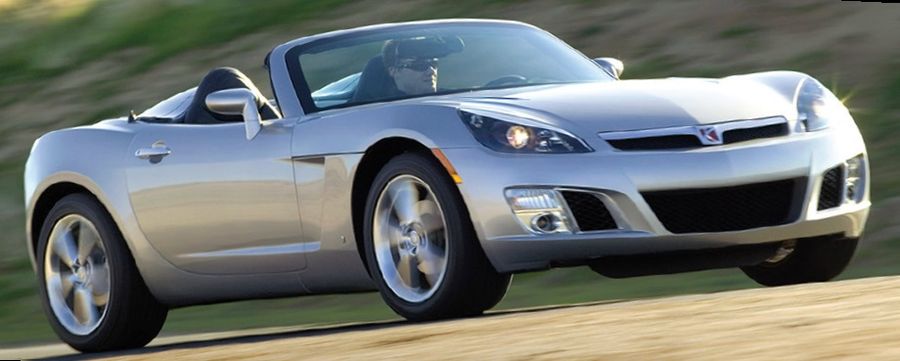
This sporty General Motors two-seater actually represented several now-shuttered brands: Pontiac called it the Solstice; Daewoo dubbed it the G2X; and last but not least among the fallen, Saturn named its version Sky. (There was also a fourth edition of this roadster, the Opel GT, but Opel still exists as a division of France's PSA Group.) All were built on GM's rear-wheel- drive Kappa platform with independent front and rear suspension, Bilstein shocks, hollow stabilizer bars, four-wheel disc brakes, and rack-and-pinion steering. A 177-horse 2.4-liter four-cylinder was standard issue, paired with a five-speed Aisin manual transmission. (A five-speed automatic was optional.) There was a hotter powertrain available in Saturn's Sky Red Line (or Solstice GXP in Pontiac parlance). The Red Line packed a 260-hp turbocharged 2-liter with direct injection, and the car was treated to some chassis tweaks as well as a limited-slip differential. The Sky is still a very capable and handsome car, though it suffered from some plasticky interior bits and low-grade materials used by GM in those days. Today they're inexpensive— especially compared to the popular Honda S2000— with average prices in the $8,000 range. For those wanting the ultimate in performance, LS V-8 swap kits are available from the aftermarket. —Mike McNessor
2008-'09 Pontiac G8
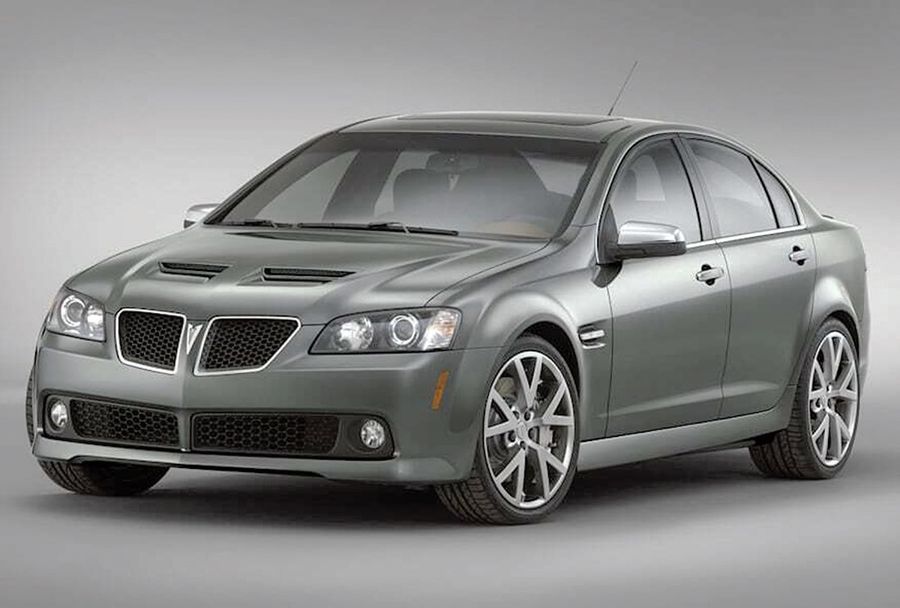
American car enthusiasts have long looked with envy at the product offerings of the Big Three in Australia. Holden, GM's Australian arm, produced V-8, RWD models that would have looked right at home with Chevrolet or Pontiac badges.
The Commodore VE arrived for the 2007 model year and for 2008, GM made it available here as the Pontiac G8. It was intended as a spiritual successor for both the Bonneville and Grand Prix nameplates. With two available LS-based V-8 engines, including a 415-hp LS3, and an available six-speed manual, it was also a worthy successor to the recently departed fifth-generation GTO, which had itself been based on a Holden, the Monaro coupe.
Pontiac, of course, ceased to sell cars after the 2009 model year. The Commodore returned to these shores for the 2014-'17 model years, when the VF was sold here as the Chevrolet SS. Holden ceased Commodore production in 2017 and GM is in the process of phasing out the brand entirely, meaning the G8 is soon to be a double orphan. —David Conwill
/stories/2020/05/29160212/HMN0720-SS1-11.jpg)

